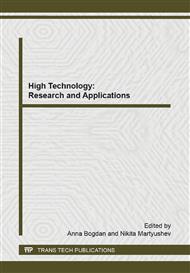p.937
p.943
p.949
p.954
p.959
p.965
p.969
p.975
p.980
Increasing the Efficiency of Using Hardware Resources for Time-Frequency Correlation Function Computation
Abstract:
In the article the techniques of increasing efficient of using multi-core processors for the task of calculating the fast Fourier transform were considered. The fast Fourier transform is led on the basis of calculating a time time-frequency correlation function. The time-frequency correlation function allows increasing the information content of the analysis as compared with the classic correlation function. The significant computational capabilities are required to calculate the time-frequency correlation function, that by reason of the necessity of multiple computing fast Fourier transform. For computing the fast Fourier transform the Cooley-Tukey algorithm with fixed base two is used, which lends itself to efficient parallelization and is simple to implement. Immediately before the fast Fourier transform computation the procedure of bit-reversing the input data sequence is used. For algorithm of calculating the time-frequency correlation function parallel computing technique was used that experimentally allowed obtaining the data defining the optimal number of iterations for each core of the CPU, depending on the sample size. The results of experiments allowed developing special software that automatically select the effective amount of subtasks for parallel processing. Also the software provides the choice of sequential or parallel computations mode, depending on the sample size and the number of frequency intervals in the calculation of time-frequency correlation function.
Info:
Periodical:
Pages:
969-974
Citation:
Online since:
September 2014
Authors:
Price:
Сopyright:
© 2014 Trans Tech Publications Ltd. All Rights Reserved
Share:
Citation:


